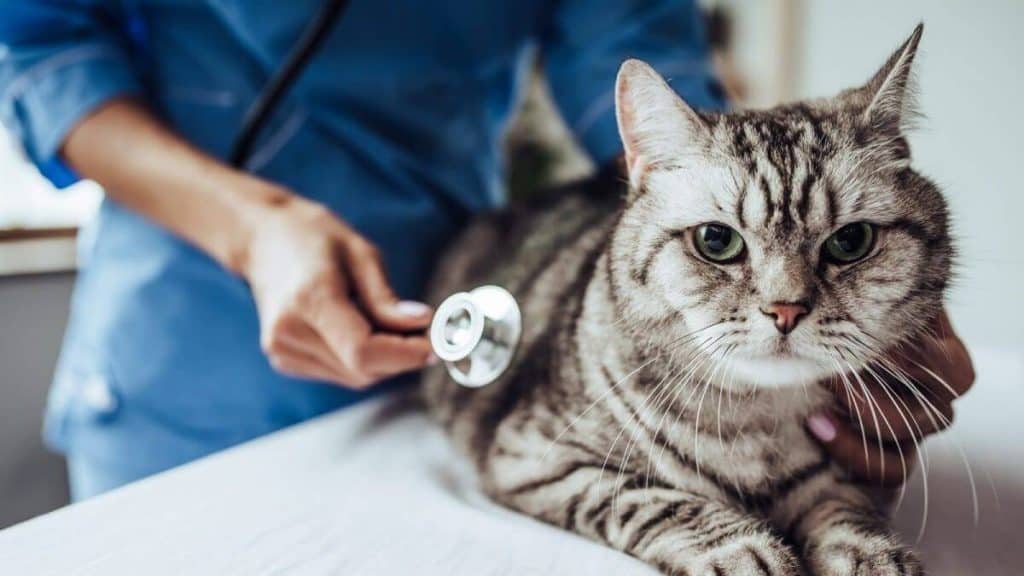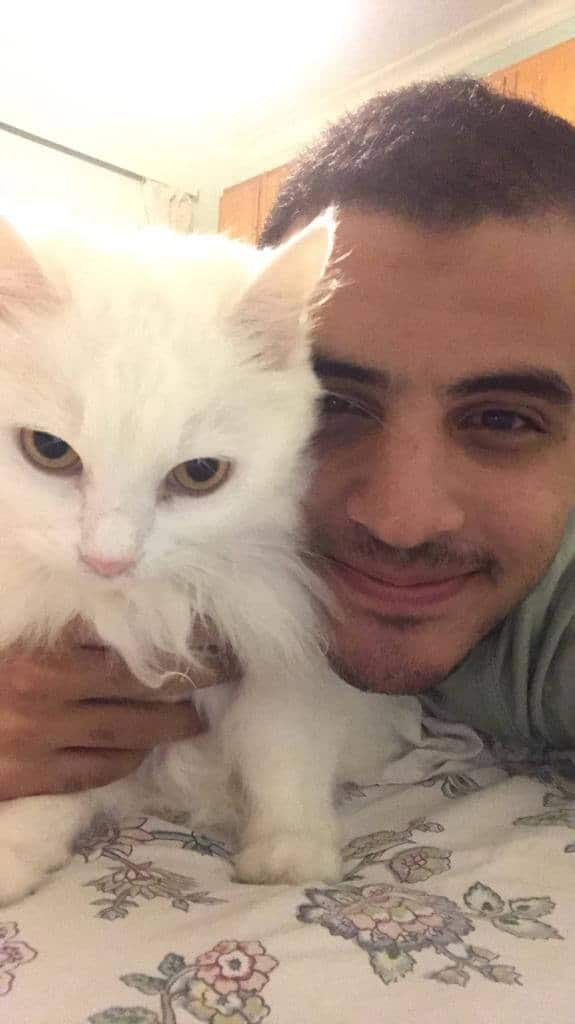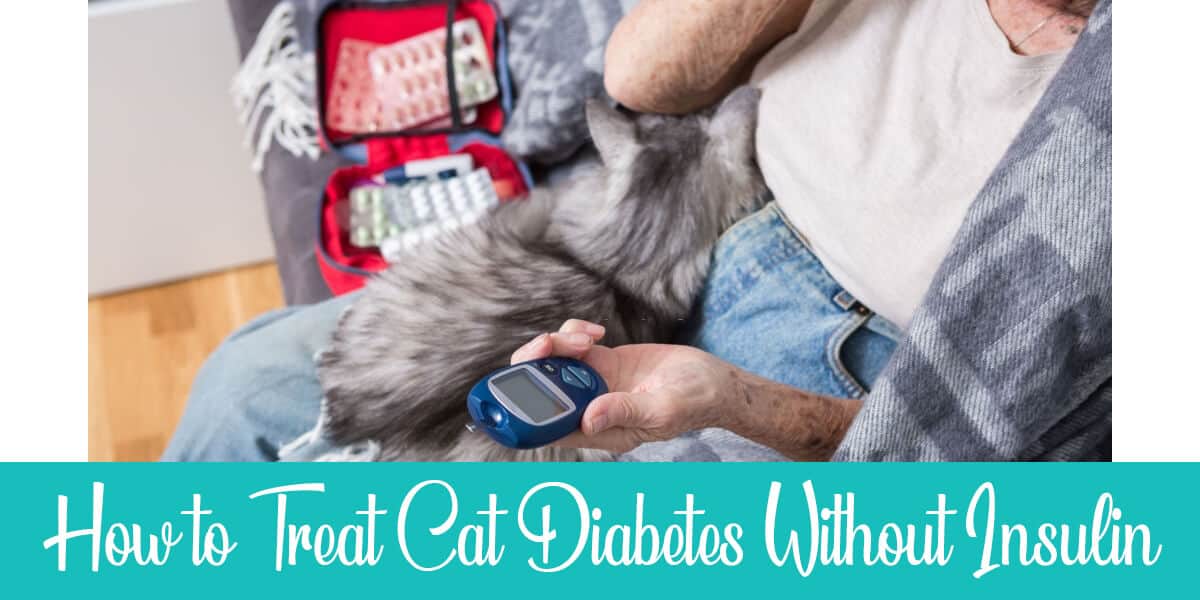Feline diabetes is one of the most common illnesses caused by a hormonal disorder in cats. It leads to an excessive increase in your pet’s blood sugar levels due to a malfunction in the pancreas, which makes your cat fall sick.
If you suspect that your furry pal is diabetic or you already had it diagnosed, it’s your responsibility to know the different ways you can manage this disease. In today’s article, we’re sharing a guide on how to treat a diabetic cat without insulin.
Table of Contents
How to Treat a Diabetic Cat without Insulin
It’s possible to treat a diabetic cat without giving insulin shots by diagnosing the disease from an early point, treating underlying illnesses that could result in elevated blood sugar levels, helping the cat lose weight, changing the cat’s diet, as well as trying oral medications.
Treating Diabetes in Cats without Administering Insulin
The treatment of feline diabetes doesn’t necessarily include the administration of insulin. The following are alternatives that could work for your cat’s case:
1. Early Diagnosis

If you don’t want to resort to giving your cat insulin, then you should keep constant track of its health parameters to ensure diagnoses as early as possible. As such, it’s important to be familiar with the clinical signs of diabetes in felines so you can recognize the illness if it occurs.
The sooner the diagnosis, the sooner and easier the treatment is going to be and the lower the chance of your cat needing insulin. Symptoms of diabetes in cats include:
- Excessive urination — you can notice this by checking the litter box and seeing bigger clumps of urine than usual.
- Excessive drinking — you can check this by keeping track of how many times your cat visits the water bowl. A higher frequency is an indication.
- Excretion of diluted urine — you can identify this when your cat’s urine doesn’t smell as strong as it normally does.
- Overweightness/obesity.
- Wasting of the back muscles.
- Increased appetite.
- Abnormal inactivity or laziness.
- Inability to walk normally, especially in the hind limbs due to nerve problems resulting from diabetic neuropathy.
2. Tackle Underlying Diseases
The culprit behind the improper production of insulin in your cat’s body could be an underlying illness, not necessarily diabetes. As such, treating these diseases can cure a diabetic cat without using insulin.
Pay your vet a visit and they’ll examine your underlying conditions that may be causing issues in insulin levels or causing the body to be less sensitive to present insulin. Examples of these illnesses include:
- A reaction to certain drugs/medications.
- Dental problems — these are usually treated using antibiotics or via dental procedures under anesthesia.
- Hyperthyroidism — typically treated using thyroid medications or may require minor surgery.
Related: Top Purina DM Cat Food Alternatives to Manage Diabetes
3. Lifestyle Changes
Some changes in the daily routine of your cat can help it overcome diabetes without having to resort to insulin. These include:
Helping Your Cat Lose Weight
Being obese or overweight is one of the reasons your cat is diabetic. If you can help your cat return to a proper weight, there’s a good chance it’ll recover from diabetes.
Putting your cat on a diet to lose weight should follow a controlled method that fulfills two conditions:
- It can sustain the normal energy level of your cat.
- It’s enough to satiate your cat and keep it happy.
These conditions will reduce the incidence of your cat begging for food. Besides a diet, be sure to incorporate more exercise into your cat’s daily schedule to help it shed the extra quickly and healthily.
Additionally, you can get your vet to recommend a prescription diet that’s tailored for controlled weight loss. If that’s not something you want to apply to your pet, you can discuss an appropriate nutritional plan with your vet.
Here’s a video with a brief step-by-step guide on how to help your cat lose weight:
Adjusting Your Cat’s Diet
If your cat isn’t obese or overweight, then you should adjust its diet towards a different purpose instead of losing weight; your cat should be eating in a way that can help bring its blood sugar levels to normal.
You should incorporate foods that possess a slow rate of energy release. This will help minimize peaks in the blood glucose levels of your cat. Your vet can suggest an appropriate diet for your cat, which can be a high protein, high fiber, and low carbohydrate diet.
4. Oral Medications
Diabetes in humans is classified into Type I and Type II. People who suffer from Type I diabetes are entirely dependent on insulin because their bodies are incapable of secreting insulin.
On the other hand, patients with Type II diabetes can produce and secrete insulin, but in inadequate amounts or with compromised sensitivity. The treatment for this type of diabetes doesn’t require the administration of insulin injections — oral alternatives can suffice.
Fortunately, feline diabetes generally seems to be similar to Type II diabetes mellitus in humans. This means that diabetic cats are still capable of producing some insulin.
Consequently, it’s no surprise that up to 30 percent of diabetic cats demonstrate a positive outcome when it comes to diabetic regulation when given oral medications without insulin. The bad news is, there’s no telling if a certain cat is going to respond as such without trying different medications and observing their effect.
That said, here are a few oral alternatives your vet may prescribe to your diabetic cat:
- Glipizide — the action of this medication is to stimulate the pancreas to increase the secretion of insulin. This can possibly lead to the production of an adequate level of adequate insulin.
There’s, however, a risk of causing digestive issues in cats taking glipizide. Also, there’s a chance that this medication will fail to control your cat’s diabetes on its own.
Often that not, glipizide is a last resort when administering insulin shots isn’t possible. This is because it doesn’t just boost pancreatic insulin secretion, but also increases the accumulation of amyloids in the pancreas, which is a cause of diabetes in itself.
- Metformin — the action of this medication is to increase the sensitivity of body tissues to insulin, so it makes it easier for them to “feel” the presence of insulin. The good thing about metformin is that, unlike glipizide, it doesn’t lead to low blood sugar.
However, there’s a list of possible side effects that include loss of appetite, lethargy, and vomiting. Additionally, metformin isn’t safe to use in cats suffering from kidney disease or ketoacidosis (or any other acidosis type).
- Vanadium — present in pretty much all the food we eat, this trace mineral demonstrates insulin-like properties with reduced side effects. It has the potential to treat feline diabetes on its own, but the likelihood of this isn’t very high.
This element has been researched in the form of vanadium dipicolinate, which is unavailable commercially. Vanadium sulfate is the form that’s readily sold by vitamin stores, but its efficacy compared to vanadium dipicolinate is yet to be determined.
- Chromium Picolinate — this is another mineral supplement that’s available in vitamin stores and seems to support the effects of insulin.
- Acarbose — lastly, the action of this medication is to hinder the breaking down of starch by inhibiting the responsible digestive enzymes. Using acarbose causes the body to absorb sugars more gradually after meals, which leads to stabilizing the levels of blood glucose.
Since the absorption of this drug doesn’t take place in the intestine, there’s no real issue in combining it with other medications. Still, some digestive side effects may occur such as flatulence, diarrhea, and weight loss.
It’s important to note that acarbose was first developed to treat obesity by disrupting the rate of sugar absorption. As a result, you should never give it to an underweight cat and it should be accompanied by food.
Treatment Considerations in Diabetic Cats
Here are a few more points to keep in mind regarding the treatment of a diabetic cat:
- If diabetes is detected in an early stage, remission is possible with controlled regulation of blood sugar levels.
- In the majority of cases, improved control of blood glucose levels is seen when the treatment plan includes insulin injections.
- When combined with an appropriate diet that consists of high protein, high fiber, and low carbohydrate foods, insulin shots can effectively induce remission. This means your cat may only require external insulin for a limited period after which it won’t be necessary.
- In practice, the response of diabetic felines is better to insulin therapy in comparison oral hypoglycemic medications. So despite the availability of alternative treatments and approaches, it’s likely that insulin is the ideal choice.
Wrap Up
As you can tell by our guide on how to treat a diabetic cat without insulin, there are multiple ways that can help you in your mission, including early diagnosis of the disease, treating underlying conditions that could result in elevated blood sugar levels, getting the cat to lose weight, changing the cat’s diet to level out the concentration of glucose in its blood, as well as trying oral medications.

I’ve been living with cats since 2008 and I can confidently say I have more feline friends than humans lol. I currently live with 5 cats in different life stages; two of them are less than one year old, one is 2-ish years old and the oldest two are 9-ish years old. I’ve developed a strong bond with cats over the years and I’m eager to share my experience through this blog. You can learn more about my cats here.

